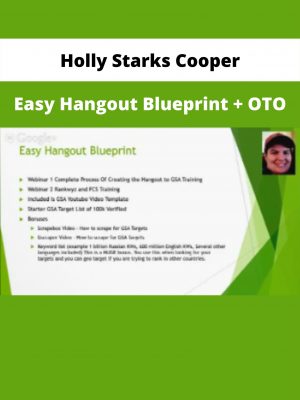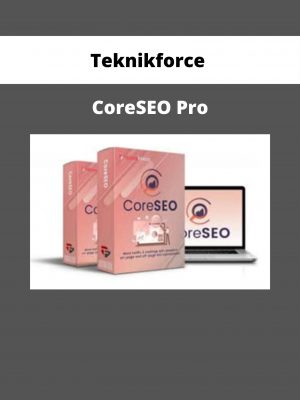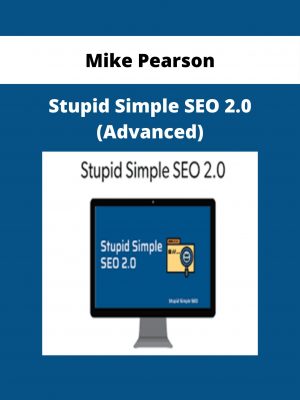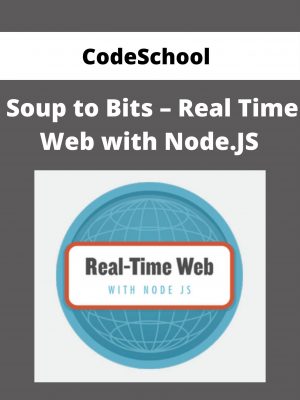Dr Heinz M. Kabutz – Bits&Bytes
$127 Original price was: $127.$40Current price is: $40.
Shopping Instructions:
- DISCOUNT 15% : SHOP15
- Product Delivery: Within 1 – 12 hours after purchase.
Bits&Bytes has 3 1/2 hours of lectures by renowned computer expert Dr Heinz Kabutz. Read what some of his readers had to say about his work:
Dr Heinz M. Kabutz – Bits&Bytes
“I have been teaching Java to professional programmers for over 19 years. During this time, I am constantly amazed how many programmers have moved over from other disciplines such as psychology, architecture, chemistry, accounting and even the military. Whilst fine programmers, they often miss some of the more fundamental education that a computer science major would have covered. I am hoping that this Bits & Bytes Course will help fill this gap and will result in a better tomorrow with programmers that are more able to understand what makes our world work. In the end, it’s all just ones and zeros.” – Dr Heinz M. Kabutz, Author of The Java Specialists Newsletter, Java Champion, JavaOne Rockstar Speaker, Computer Scientist, Teacher
In this course you will learn how to:
1. convert between different bases, such as octal, decimal, hexadecimal and binary.
2. do bitwise arithmetic with AND, OR, XOR and COMPLEMENT
3. shift bits left and right and what the difference is between unsigned and signed shift
4. print the internals of int and float.
5. negate a number using 2’s complement and why Math.abs(n) might be negative
6. understand rounding errors and how represent decimal numbers in binary.
7. write a great hashCode() method in Java with the least number of bucket collisions.
8. compare BitSet with EnumSet and discover practical use cases in the JDK.
Bits&Bytes has 3 1/2 hours of lectures by renowned computer expert Dr Heinz Kabutz. Read what some of his readers had to say about his work:
Henri Tremblay – “I’ve been coding in Java since 1998. And still, everytime I read the Java Specialists Newsletter, I learn something.”
Simon Ritter – “Heinz gives well researched clear explanations and guidance on many tricky aspects of Java. A goldmine of useful information!”
John Green – “I enjoyed this course even though I thought I knew everything I needed to know about bits and bytes. In fact, I thought that I probably didn’t need to use low level knowledge like this in Java – that I could leave it to C programmers 😉 Instead, I’ve found not just that it is still very much in use by JDK developers, even code added to Java 9, but that I should probably read more on floating point numbers before I can consider my knowledge to be complete. The practical tips on hashing and bit sets will be useful for programming in future.”
Are you ready to join our course?
Here are some more reasons
1. Ask questions in the course material and get a guaranteed response from the course author within three working days or your money back.
2. Simple no-nonsense 30-day money back guarantee, no questions asked.
3. Invite to private Facebook group with Heinz Kabutz and other students
Your Instructor
Dr Heinz M. Kabutz
Dr Heinz M. Kabutz
Heinz Kabutz is the author of The Java Specialists’ Newsletter, a publication enjoyed by tens of thousands of Java experts in over 145 countries. His book “Dynamic Proxies (in German)” was #1 Bestseller on Amazon.de in Fachbücher für Informatik for about five minutes until Amazon fixed their algorithm. Thanks to a supportive mother, he has now sold 5 copies.
Heinz’s Java Specialists’ newsletter is filled with amusing anecdotes of life on the Island of Crete. He is a popular speaker at all the best Java conferences around the world, and also at some of the worst. He teaches Java courses in classrooms around the world, where his prime objective is to make absolutely sure that none of his students fall asleep. He is not always successful.
Get immediately download Dr Heinz M. Kabutz – Bits&Bytes
Course Curriculum
Chapter 1 – Introduction to Number Bases
1. Welcome: Course Origin, Expected Outcomes, Who it is for, Code Samples (4:32)
2. What are bits, bytes and nibbles? (2:54)
3. How many bytes does each primitive type use in Java? (6:10)
4. Converting between base 10 (decimal) and base 5 (9:55)
5. Converting between decimal and binary (2:59)
6. Converting between binary and octal (5:21)
7. Converting between binary and hexadecimal (5:35)
Chapter 2 – Bitwise Operators
8. Bitwise operators OR (|) and AND (&) (11:29)
9. Bitwise operator XOR (^) and COMPLEMENT (~) (6:06)
10. Shift left << (6:58)
11. Shift right, signed >> and unsigned >>> (11:15)
Chapter 3 – Exploring Bits Inside a Number
12. Writing a BitPrinter (18:25)
13. Exploring bits in integer values and why ~0 == -1 (8:24)
14. Masking individual bits inside a number (14:03)
Chapter 4 – 2’s Complement and Floating Point Numbers
15. Why Math.abs(num) might be negative (9:02)
16. Exploring how floating point numbers work (17:14)
Chapter 5 – Hashing
17. Evolution of hash() in Java HashMap (15:16)
18. Minimizing bucket collisions in HashMap (11:32)
Chapter 6 – Practical Application of Bit Magic Inside the JDK
19. java.util.BitSet (example usage ArrayList.removeIf in Java 8) (14:47)
20. EnumSet vs bit masking (example usage Spliterator) (10:43)
21. Finding midpoint of two ints without overflowing (from Spliterators) (5:07)
22. Modifiers in Reflection (7:27)
Chapter 7 – Conclusion
23. Conclusion (2:19)
Frequently Asked Questions
How long do I have access to a fully paid course?
How does lifetime access sound? After enrolling, you have unlimited access to this course for as long as you like – across any and all devices you own. Furthermore, if we move to another platform, we will offer you a free transfer of your account for all the courses that you have purchased.
How many times can I cancel and rejoin a subscription course?
To prevent abuse, we limit the number of times that you can cancel and rejoin our subscription based courses to three times.
What is the difference between a subscription, paying in installments and an outright purchase?
With a subscription, you never own the rights to the material. If your card is declined or you cancel your subscription, you lose access to the course. The money you have paid so far is lost. Paying in installments is a bit better. You pay for 5 or 10 months and then once you have completed your installments you have lifetime access to the course. The safest is an outright purchase, where you pay the entire course in one amount. There is no risk of losing access.
Can I pay via PayPal?
Yes, you can for outright purchases, but not for recurring payments such as paying by installments or subscriptions.
Can I get an EU VAT Invoice?
Absolutely. First off, be sure to enter the VAT number in the appropriate field during the payment process. Then contact us for an EU VAT Invoice. Please tell us the receipt number for which you need the invoice.
May I share my login details with my colleagues?
Unfortunately not. The terms of usage are for a single license. Teachable tracks your progress through the curriculum, so you won’t know how much you have watched. We offer a 30% discount on 50 licenses or more by one company. Please contact us for bulk licensing.
May we use the course for running in-house courses?
You may, as long as each of the students in the class has a valid license for that course. For example, some companies run lunch time Design Patterns study groups using our material. This is an effective way to learn. Please contact us for bulk licensing.
What if I am unhappy with the course?
We would never want you to be unhappy! If you are unsatisfied with your purchase, contact us in the first 30 days and we will give you a full refund and deregister you from the course.
When does the course and finish?
The course s now and never ends! It is a completely self-paced online course – you decide when you and when you finish. We do recommend putting time aside and setting goals to complete the course.
Can I watch the course offline during my commute?
Teachable have an iOS app that lets you watch offline. Android is not supported unfortunately.
Read more: https://archive.is/512Mh
Here’s What You’ll Get in Dr Heinz M. Kabutz – Bits&Bytes
Be the first to review “Dr Heinz M. Kabutz – Bits&Bytes” Cancel reply
Related products
SEO & Design Website
SEO & Design Website
SEO & Design Website
SEO & Design Website
SEO & Design Website
SEO & Design Website
SEO & Design Website
SEO & Design Website














Reviews
There are no reviews yet.